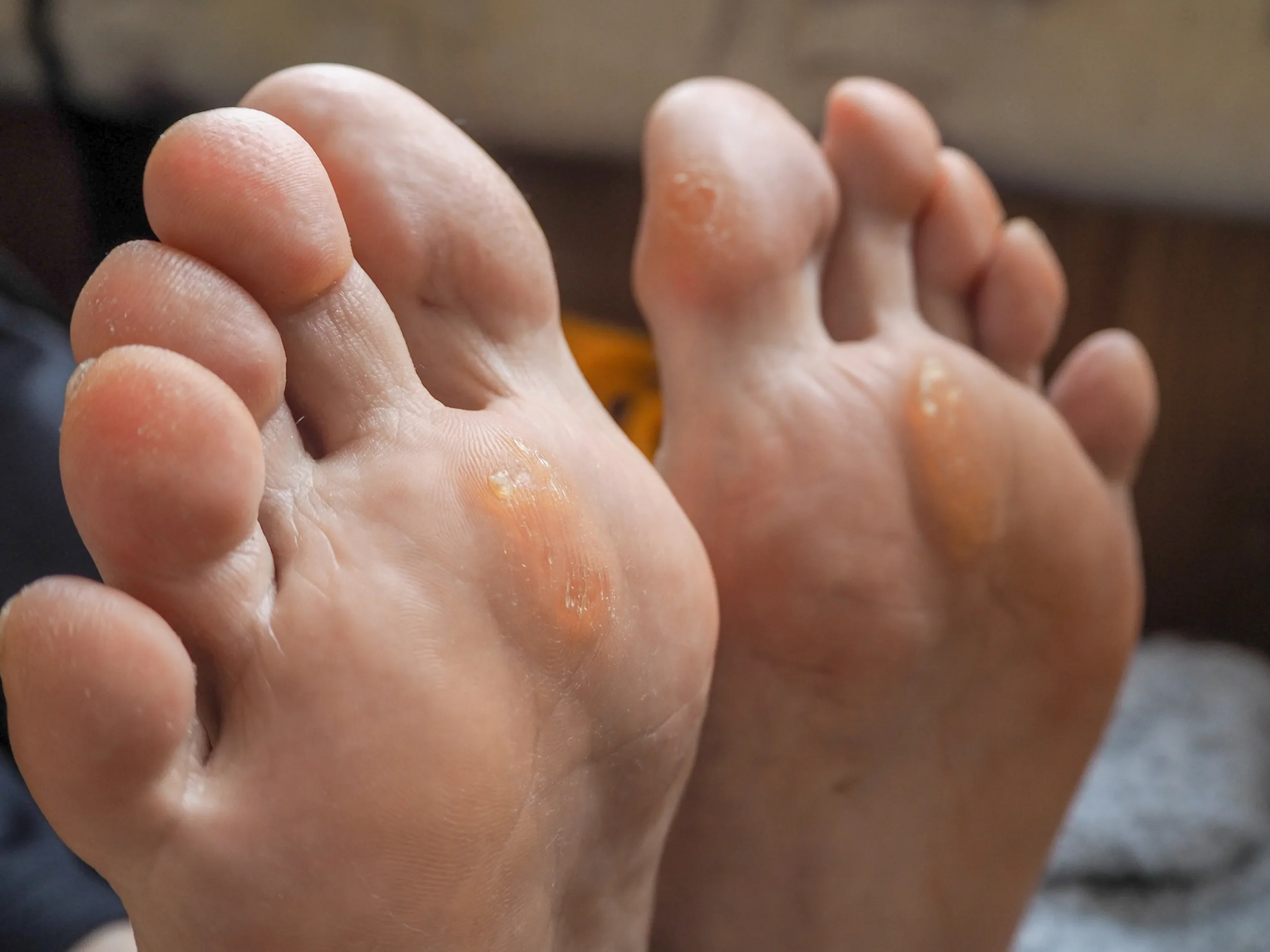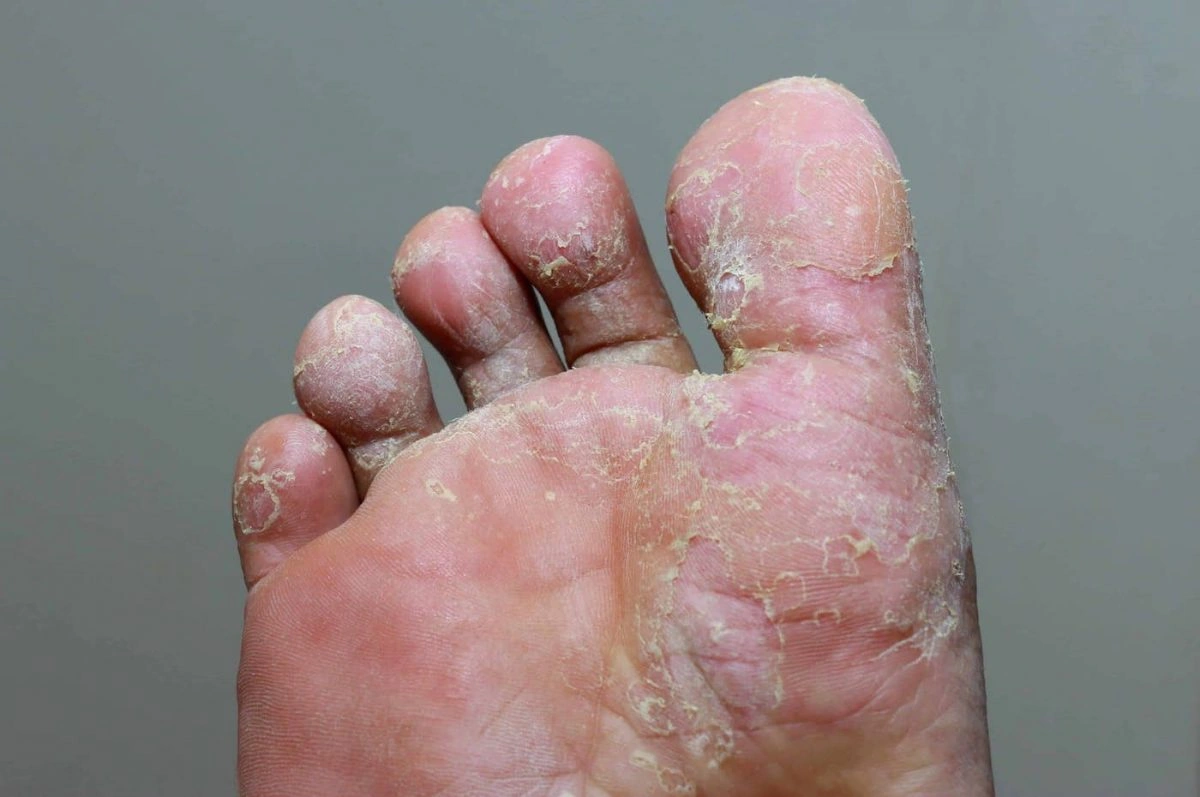That “Harmless” Itch—Or Is It?
Let’s set the scene: You kick off your shoes after a wild day (or, let’s be real, just a really long one)… and there’s that itch. You know the one. Maybe you wiggle your toes, maybe you rub the spot, maybe you just roll your eyes and blame your old socks or gym shoes and forget about it. No big deal, right?
But here’s the thing: Sometimes, what seems like a small irritation is your body waving a red flag. Yup—the kind of flag that says, “Hey, there could be a fungus among us.” Literally.
Why Do My Feet Act Up?
Maybe this sounds familiar: You’ve had a super sweaty day, or you just got home after a session at the gym. Your feet feel itchy, a bit tingly—especially around (you guessed it) those awkward spaces between your toes. Ever wondered why? Or, honestly, why it matters?
Well, friend, that is pretty much the kind of place foot fungus loves to call home. Especially athlete’s foot (tinea pedis for you trivia buffs). Warm, damp, and kinda forgotten about? Perfect. And—plot twist!—even if you think your feet are squeaky clean, fungus can hitch a ride just by walking barefoot in a damp locker room or sharing a towel. Not to freak you out… but that’s how easy it can happen according to the Cleveland Clinic.
Could It Really Be Fungus?
The first sign of trouble almost always feels like a regular itch, but the kicker is it just doesn’t stop. Maybe you see some redness or a scaly, peeling patch of skin. Maybe it feels like your feet are burning, especially after pulling off your shoes and socks. For a lot of folks, the skin actually starts to crack or flake between the toes, almost like dry skin… but it’s not just dryness; it gets worse instead of better.
Fun fact (well, not that fun for your feet): One time, after a hiking trip, I ignored an itch that wouldn’t quit. Three days later, I could hardly walk because the skin was breaking and burning—and yeah, it was classic athlete’s foot. I wish I’d checked Foot fungus pictures before it got that far.
What’s Lurking Under the Surface?
Of course, feet are tricky. It’s not always between the toes. Ever had your heels or the bottom of your feet get so dry and flaky that nothing—not even the heavy-duty lotion—helps? That’s another way this sneaky fungus can show up. It’s called the “moccasin” type of athlete’s foot, and it’s a pro at disguising itself as plain old dryness.
How Can I Tell?
Touch your heels or the sides of your feet. Do you feel thickened, scaly patches that seem to almost “creep” from heel to toe? Does the burning or stinging kick in when you stand or walk a lot?
Here’s a tip I learned: Try pressing a damp towel to those spots. If the skin peels even more or feels extra soft and irritable afterward, that’s another clue that you should check out how to identify foot fungus naturally, instead of assuming it’s just dry skin.
Dry Skin or Fungus? Here’s a Handy Table:
| Normal Dry Skin | Foot Fungus Signs |
|---|---|
| Mild flaking, doesn’t itch much | Itching, stinging, especially in shoes |
| Better with lotion | Gets worse with sweat and moisture |
| Even on both feet | Starts or worsens on one side |
| No odor | Noticeable odor (musty or yeasty) |
Hold Up—Is Something Weird Happening to My Nails?
Maybe it’s not the skin… maybe it’s your toenails suddenly looking, well, a little wonky. Have you ever caught yourself staring at a toenail and thinking, “Was that always so yellow?” Or why it’s starting to look thicker, or—yikes—even a little crumbly at the edge?
That, my friend, is called onychomycosis (toenail fungus). It loves toes way more than fingers because toes are usually tucked away in warm, dark shoes—that’s like a spa day for fungus according to Mayo Clinic. If the nail’s separating from the bed, or you spot debris building up underneath, it’s probably time to, you know, check some Foot fungus pictures and see if your toes are starring in their own little horror story.
:max_bytes(150000):strip_icc()/VWH-GettyImages-1490447104-f3d0da49dccb4f13913c06bc4eb6e771.jpg)
Is It Fungus or Just a Bruise?
Let’s get practical for a sec:
- If the nail is painful and thick, crumbles at the edge, or starts to lift—you’re probably dealing with more than just a stubbed toe.
- Does the color shift from clear to murky yellow, gray, or brown? That’s a classic fungus calling card.
- Does just washing and waiting fix it? If not, it’s worth checking out more on how to identify foot fungus naturally (and early).
Here’s a quick story: My friend thought a rogue pedicure left her toenail wonky, but after it thickened and turned dull, it was pretty obvious—fungus had moved in. Treatment took a while, but catching it quickly kept her other toes safe!
Blisters, Smells, Odd Spots: The Plot Thickens
So, itchy toes and flaky nails aren’t the only drama in town. Sometimes, you might see little blisters—tiny, fluid-filled bubbles (sounds cute, isn’t). These usually pop up on your soles or arches and can burst, leaving raw skin. You might notice a “yeasty” sort of smell even with regular washing—a sign fungus is happily making itself at home.
Here’s a weird one: Have you ever noticed a smell that just won’t go away no matter how much scrubbing or soaking you do? That’s sometimes the only sign before any red or flaky skin shows. It’s the kind of thing that sneaks up on you if you wear boots or non-breathable shoes a lot.
Honestly, I thought all foot smells were the same until I learned they can be a warning for a brewing infection. Find more examples and see how they compare to your own case in these real-life Foot fungus pictures (squeamish warning, but so helpful!).

But Who Gets Foot Fungus, Really?
Let’s be real—most of us think foot fungus is for athletes or, you know, “other people.” Newsflash: You don’t have to be sprinting laps to end up with fungus! In fact, most cases happen to people simply living their lives—parents in damp playgrounds, commuters hustling through rainy days, or, ahem, hikers who don’t change their socks (guilty).
If your feet are often sweaty or you use public pools, changing rooms, or even shared yoga mats, you’re at greater risk. People with diabetes or circulation problems? Definitely keep an eye out. Even a minor scrape or split in your skin can give fungus a ticket in.
There’s something about those communal showers at the gym—you know, the ones with slightly questionable drains and leftover puddles. Quick tip? Flip flops are your friend, not just a suggestion.
Think You’re Safe? These Habits Say Otherwise:
- Wearing damp socks or shoes? Uh-oh.
- Forgetting to dry between your toes post-shower?
- Sharing towels or nail clippers (even with family)? Fungus loves this!
- Rotating between the same two pairs of sneakers for weeks? You’re basically running a day spa for foot fungus.
Honestly, I ruined a favorite pair of hiking boots because I didn’t let them dry out between treks. Lesson learned (the hard way).
How to Identify Foot Fungus—Without a Medical Degree
Okay, let’s roll up our sleeves. The big question: How do you actually spot foot fungus before it takes over?
Here’s the real talk: You don’t need fancy tests for most cases. If you’re noticing itching, burning, redness, peeling skin, thickened or discolored nails, and especially a weird smell… you’re already halfway to the answer based on findings from foot specialists.
Naturally, here’s how to identify foot fungus at home:
- Look closely. Search for peeling, scaling, and cracks—especially between toes and on the soles near your heels and sides.
- Check color and texture. If your skin or nails start changing from pink and healthy to gray, red, yellow, or brown—and feel bumpy, moist, or flaky—pause and reflect.
- Smell check. Unpleasant, slightly sweet rotten odor you just can’t scrub away? Yup, that’s classic fungus behavior.
- Don’t forget your nails. The slightest yellowing, thickening, or brittleness? Chalk it up to fungus until you can rule it out.
If you want to compare with real cases, just click through Foot fungus pictures to see what early, moderate, and severe looks like. Sometimes, you’ll know right away (sometimes… not so much; that’s when it’s time to chat with a pro).
By the way, if symptoms don’t budge after two weeks of over-the-counter stuff, or if you see swelling, pus, or intense pain—don’t wait. Doctors have seen it all and can make sure you’re on the right track.
Simple Habits to Keep Fungus at Bay
I get it—once you know how to identify foot fungus, it’s seriously tempting to Google every spot and scratch. But how about we keep it from popping up in the first place? Here’s what works (and what totally doesn’t) in my own experience:
| Do This | Don’t Do That |
|---|---|
| Dry feet fully after every wash—including between toes | Walk barefoot in public showers, gyms, or hotel rooms |
| Change socks if they get sweaty (seriously, even midday!) | Share towels, clippers, or shoes with others |
| Rotate shoes and let them air out between wears | Ignore persistent itch or changes for “just another week” |
| Use antifungal spray or powder if you’re at higher risk | Stick to synthetic socks that trap sweat—cotton or wool is better! |
So… What’s Next for Your Feet?
Let’s do the slow exhale for a second. Most of us will deal with foot fungus at some point—seriously, you’re so not alone if your toes are a little flaky or your nails look off. The trick? Taking a few minutes every week to actually look at your feet (not just when you trip on something) can help you catch problems before they get dramatic. It’s self-care—no shame needed.
Next time you notice an itch that sticks… or you spot changes in your skin or nails… or there’s that stubborn foot odor—pause, remember what you’ve read here, and trust your instincts. how to identify foot fungus at home isn’t rocket science. You don’t need flashlights or microscopes. You need just a little curiosity (and, sometimes, enough courage to compare with slightly scary Foot fungus pictures).
Your feet—yep, those workhorses—deserve some respect. They carry you everywhere. So, give them a once-over now and then, treat them to dry shoes and clean socks, and don’t wait to ask for help if something weird crops up. Trust me… you’ll be glad you did.
What about you—ever spotted something strange on your toes and caught it early? Are you that friend with “weird foot stories”? Let’s hear your tips (or confessions). In the end, even the smallest steps keep us moving forward.


















Leave a Reply
You must be logged in to post a comment.